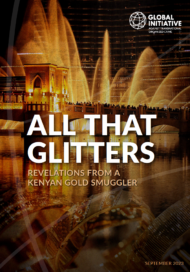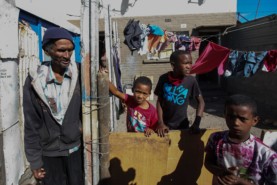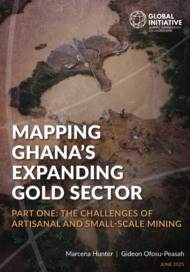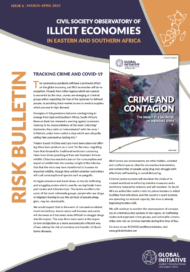Posted on 07 Sep 2023
Despite minimal domestic production, gold has figured prominently in Kenya’s recent history. Many Kenyans can still vividly recall the ‘Goldenberg’ scandal of the 1990s, a gold export and foreign exchange fraud scheme that drained government coffers of a sum exceeding ten percent of Kenya’s GDP at the time.
The late 1990s also saw the collapse of Mobutu Sese Seko’s regime in then Zaïre, followed by a devastating half-decade-long regional conflict that resulted in the loss of five million lives, mainly from war-related hunger and disease. Facing external invasion and an internal revolt, Zaïre’s successor state, the Democratic Republic of the Congo (DRC), lost control of most of the resource-rich territory in the east of the country. Since then, the smuggling of artisanally mined minerals, including gold, have fuelled an ongoing conflict that in 2022 reached an intensity not seen for a decade. Insurgent groups, pro-government militias and criminal networks all continue to benefit from the tonnes of gold smuggled out of eastern DRC each year. Kenya has long been one of the principal regional transit hubs – along with Uganda, Rwanda, Burundi and Tanzania – for the smuggling of this conflict gold.
Almost as lucrative as the smuggling of genuine gold through Kenya are the myriad scams that seek to peddle counterfeit or non-existent quantities of the precious metal to unsuspecting buyers. The targets of these scams are often foreigners travelling to Africa in search of hit-and-run riches. Gold swindles have on occasion escalated into embarrassing diplomatic rows, most notably in 2020 when both the president of Kenya and the main opposition leader were summoned to a meeting by the emir of Dubai over an Emirati company that had been victimized by Kenyan fraudsters. Dubai is by far the most popular destination for smuggled East African gold, due to its status as a tax haven as well as a key aviation hub.
The Global Initiative Against Transnational Organized Crime (GI-TOC) conducted extensive interviews with a Kenyan national whose initial career in aviation logistics – specifically the charting of private jets – gradually pulled him into the gold trafficking underworld.
During these interviews, this insider provided the GI-TOC with a series of unique insights based on a decade of experience in the East African illicit gold trade. These insights will be presented through several accounts of operations in which our source was involved, ranging from fictitious customs seizures to an attempt by an Israeli businessman to commandeer an aircraft, a German with ‘gold fever’, a month-long airport standoff in the UAE and a visit to an artisanal smelting facility located in the heart of Kenya’s capital, Nairobi. Taken together, our source’s revelations paint a picture of an illicit economy characterized more by con artistry and double-dealing than genuine commodity trading.




